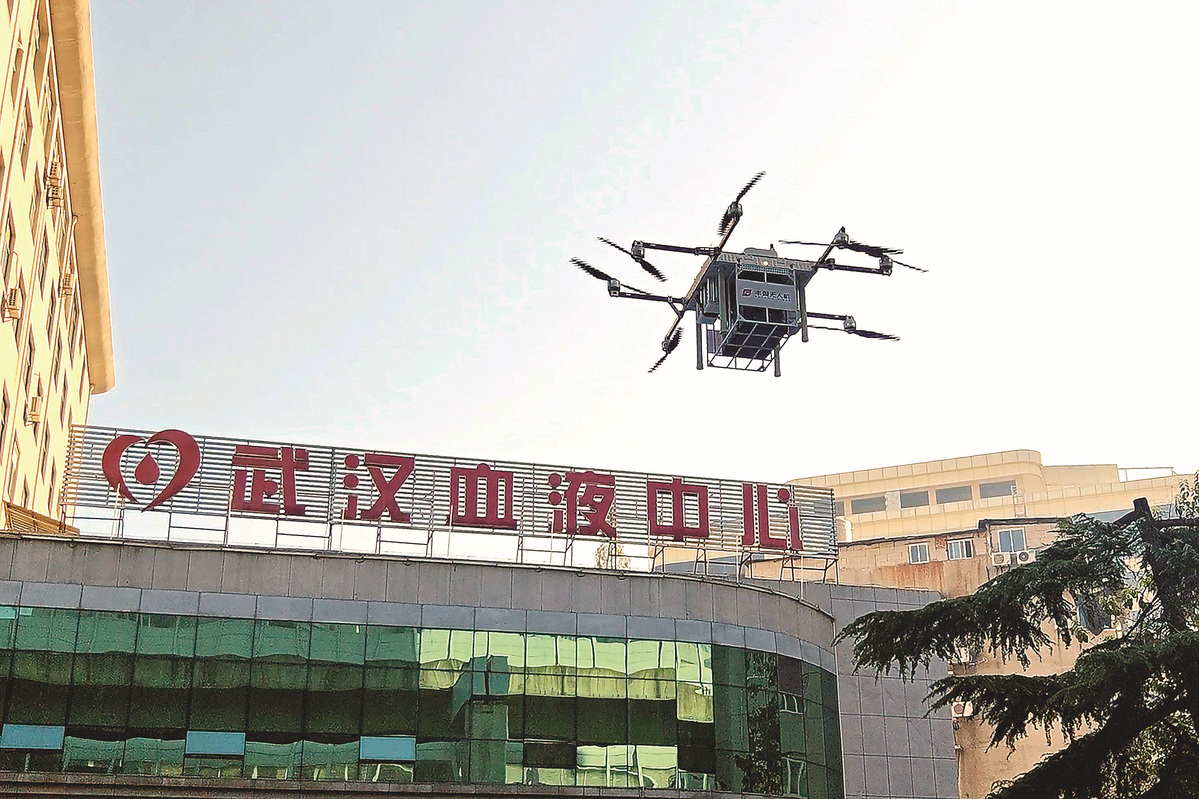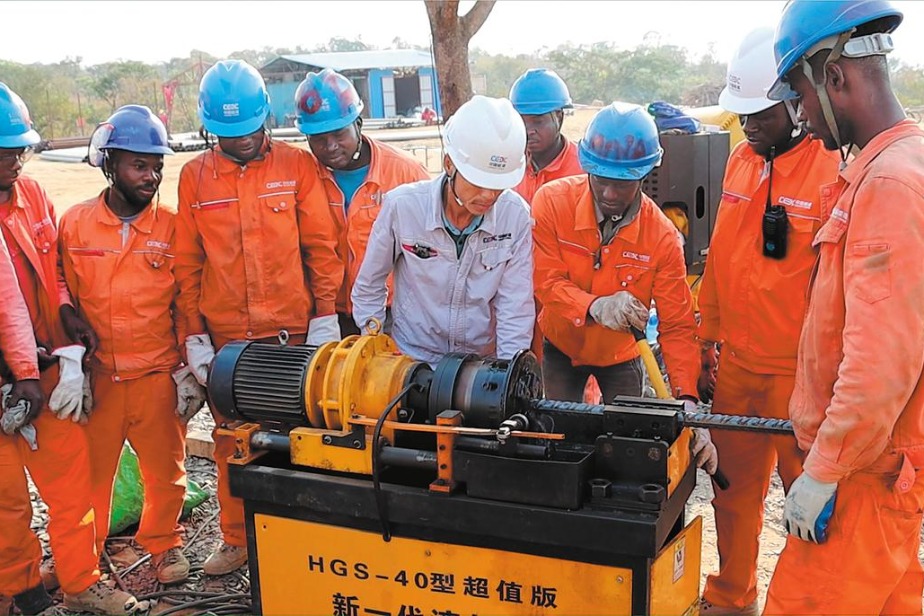Life-saving drones deliver blood for Wuhan hospital


As the saying goes: Time is life. And it's especially true when it comes to the medical sector.
This has been effectively put into practice by medical workers at a hospital in Wuhan, Hubei province. They have started using drones to transport blood, wasting no time in saving lives.
During rush hour on Monday morning, the Wuhan Blood Center received a call from Wuhan Asia General Hospital for surgical blood. Workers from the center, about 11 kilometers away, retrieved 800 milliliters of the blood type needed. Together with the drone company staff, they sealed the blood before placing the blood transport box into the drone delivery box.
At 10 am, the drone set off. It flew about 300 meters above the ground and arrived at its destination after 19 minutes, marking the launch of Wuhan's first low-altitude blood distribution route.
The drone is a product of Phoenix Wings, a cargo drone company under China's delivery giant SF Express. While approaching its destination, the drone can scan a QR code at the center of the parking apron to help it make a precise landing.
"In cases of emergency blood needs, we used to send an ambulance to the center to fetch the blood. The round trip distance is about 22 km, taking us about one hour. And during peak traffic, it would take about 1.5 hours," said Du Weiwei, director of the medical administration department at the hospital.
Chen Hongtao, who is in charge of the government and enterprises project of the Hubei branch of SF Express, said the drone has a carrying capacity of 10 kilograms. It can transport 8,000 ml of blood at one time, which can meet the daily demand for a large or medium-sized hospital, he said.
He added the drone can operate normally during nighttime and on days with light rain or snow. Its flying speed is about 12 meters per second.
Drone transport features advantages such as controllable transport frequency, punctual delivery and minimal human interference. It addresses problems in medical resources transport such as traffic congestion, long delivery time and high labor involvement. Particularly in emergency and nighttime blood delivery, drone transport possesses inherent advantages, Chen said.
"Airflow disturbance and sound from the drone's propellers hinder birds from approaching," he added.
The Wuhan Blood Center controls the temperature of the blood to ensure that every step complies with safety and hygiene standards. The company also trains staff following regulations of the health department, according to Chen.
Wuhan was approved for 18 low-altitude commercial trial routes in mid-October, including 12 drone logistics routes. They include blood-delivery routes from the center to Wuhan Asia General Hospital and to Tongji Hospital, which is affiliated to the Tongji Medical College of the Huazhong University of Science and Technology.
Once in regular operation, these routes can run twice a day in the morning and afternoon. And evening flights can be determined based on actual circumstances.
According to Chen, the drone has a flight range of 10 to 15 km, making it ideal for small and urgent item deliveries within cities.
"We hope to collaborate with more medical institutions and testing facilities with low-altitude delivery needs," he said, adding that the drone only needs a parking apron of 10 square meters.
Xu Bing, deputy director of the Hubei Provincial Postal Administration, said the launch of drone blood delivery services will greatly reduce the transportation time from blood collection points to patients, improving the efficiency and safety of the services.
"For patients in urgent need of blood transfusions, this is undoubtedly a hope for life," Xu said.
In Shenzhen, Guangdong province, the Shenzhen Blood Center cooperated with the Shenzhen branch of China Telecom to build a 5G drone blood transport intelligent airport platform in January. The service covers several hospitals in the city.
For example, the route connecting the center and the Luohu People's Hospital can shorten the delivery time of 60 minutes on the road to nine minutes by air, chinanews.com reported. Supported by 5G and artificial intelligence technology, real-time information such as location, temperature and flying conditions can be recorded to ensure transport safety.
Blood-delivery services by drones are also available in cities such as Guangzhou in Guangdong, Nanjing in Jiangsu province and Hefei in Anhui province.
Contact the writers at chenmeiling@chinadaily.com.cn
- High-tech, new energy products buoy trade
- Global experts discuss leveraging oasis biosphere reserves to empower sustainability in arid lands
- Para rowers: We shine together
- Xi attends grand gathering in celebration of Xinjiang Uygur autonomous region's 70th founding anniversary
- Xinjiang breaks 2t yuan GDP mark in 2024
- Xinjiang's ice & snow tourism hits new heights





































